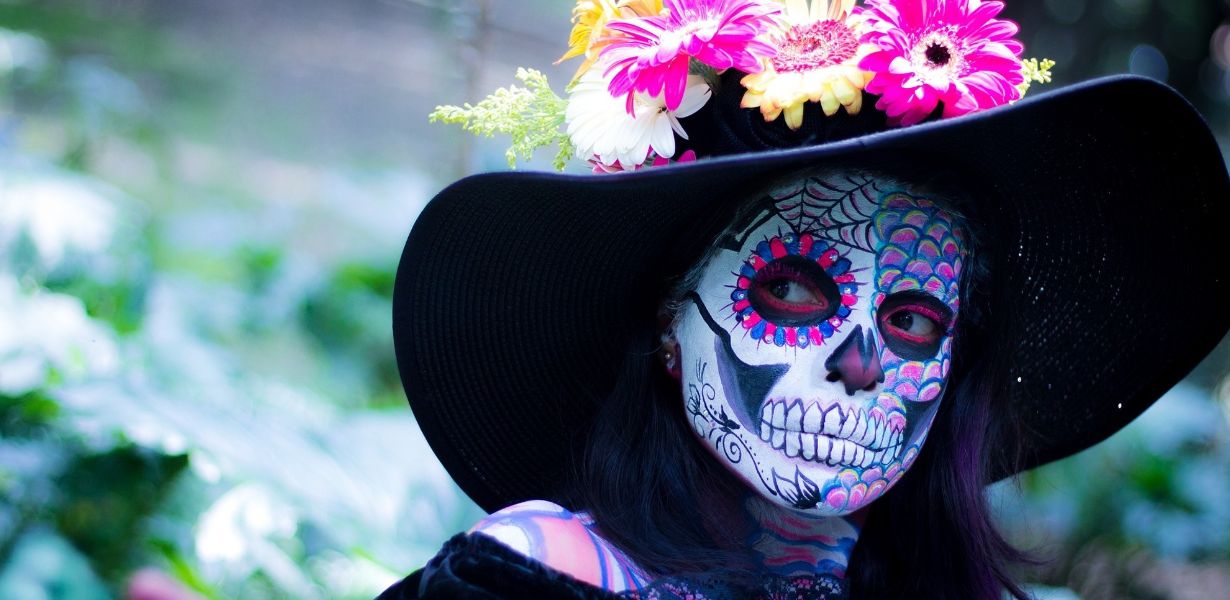
In the heart of Mexico’s cultural landscape lies a celebration that enchants and inspires: the Mexican Day of the Dead. This age-old tradition intertwines joyous festivities with profound reverence for ancestors, creating a unique tapestry of cultural heritage that draws visitors and enthusiasts from all corners of the world. Let’s delve into the captivating world of this annual event, exploring its origins, rituals, symbolism, and the delicious culinary treats that accompany it.
Origins of Mexican Day of the Dead
The origins of Mexican Day of the Dead can be traced back to the indigenous cultures of Mesoamerica, where the Aztecs and other native groups celebrated the cyclical relationship between life and death. These cultures believed that death was just another phase of life, and the deceased could still communicate with the living. This profound belief laid the foundation for the modern celebration.
An Annual Celebration of Life and Death
Mexican Day of the Dead is observed annually from October 31st to November 2nd, aligning with the Catholic holidays of All Hallows’ Eve, All Saints’ Day, and All Souls’ Day. During these days, families create ofrendas (altars) adorned with marigolds, candles, sugar skulls, and the favorite foods and possessions of their departed loved ones. These altars serve as a bridge between the realms of the living and the dead, inviting spirits to join in the festivities.
Symbolism and Iconography
Marigolds, known as “cempasúchil,” are a central symbol of Mexican Day of the Dead. Their vibrant orange and yellow hues are believed to guide the spirits back to the world of the living. Sugar skulls, intricately decorated with colorful icing and often bearing the names of the deceased, are another iconic element. These “calaveras” are not macabre, but rather a joyful representation of death as a natural part of life.
Day of the Dead Food Delights
day of the dead food
Central to the festivities is the indulgence in a variety of delicious foods. Pan de Muerto, a sweet bread adorned with bone-shaped decorations, is a staple. Families also prepare the deceased’s favorite dishes as offerings. Tamales, mole, and atole are often found on ofrendas, representing a flavorful connection between generations.
Day of the Dead in Mexico City
day of the dead Mexico City
While Mexican Day of the Dead is celebrated throughout the country, Mexico City boasts some of the most vibrant and elaborate festivities. The streets come alive with parades, concerts, and art exhibitions. The grandest celebration takes place at the famous Zócalo square, where a colossal ofrenda is displayed, showcasing the artistry and diversity of Mexican culture.
10 Short Facts About Mexican Day of the Dead
10 short facts about day of the dead
Mexican Day of the Dead is inscribed as an Intangible Cultural Heritage of Humanity by UNESCO.
The holiday’s roots date back over 3,000 years.
Offerings may include the deceased’s clothing, photographs, and even shots of tequila.
The monarch butterfly, which migrates to Mexico during the holiday, is believed to carry the spirits of the departed.
Families gather in cemeteries to clean and decorate graves, often spending the night in vigil.
The holiday was initially celebrated during the summer months, but was later aligned with the Catholic holidays.
Catrinas, elegantly dressed skeletal figures, are a popular motif during the celebration.
Many indigenous communities have their own variations of the holiday, each with unique traditions.
The marigold’s strong fragrance is thought to help guide the spirits.
Day of the Dead art often includes intricate papel picado, decorative paper with perforated designs.
Final Words
Mexican Day of the Dead is a truly captivating celebration that unites life and death in a colorful display of cultural richness. From the marigolds that lead the way for spirits to the joyful gatherings at ofrendas, this tradition reflects the deep connection Mexicans hold with their ancestors and the enduring circle of existence.
Commonly Asked Questions
Q1: Is Mexican Day of the Dead a somber occasion?
A: No, it’s a festive celebration that honors departed loved ones with joy and remembrance.
Q2: Can tourists participate in the celebrations?
A: Absolutely! Many regions, especially Mexico City, welcome tourists to experience the festivities.
Q3: How do families prepare ofrendas?
A: Families decorate altars with marigolds, candles, photos, and the favorite foods of the deceased.
Q4: Is Mexican Day of the Dead the same as Halloween?
A: While they share some dates, Halloween and Mexican Day of the Dead have distinct cultural and historical roots.
Q5: How does Mexican Day of the Dead vary across regions?
A: Different regions have unique traditions and interpretations, adding to the diverse tapestry of this celebration.




